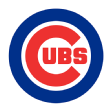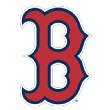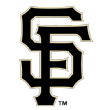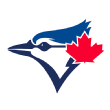The Chicago Cubs' 2015 season ended with a humbling sweep at the hands of the New York Mets, but in listening to the Chicago players and to manager Joe Maddon right after defeat, it didn't sound like an ending. Rather, they seemed to view it as a beginning, in the way they framed it emotionally, knowing how young they are, knowing that there is room for growth in this group of players.
"For me personally, I walked in the door not really knowing anybody in Arizona, hardly anybody when we got there in February, and how we built relationships and created a culture within one year is pretty spectacular within the clubhouse," Maddon said, detailing what he told the players right after they were eliminated.
"I mentioned to them how important it is as we move forward and [when] we go to spring training next year, we know exactly what we want to do and how we want to do it. On top of that, our young players have learned how to win on a major league level, which matters. And to get within four games of the World Series in your freshman year is not a bad thing."
Words worth remembering for this final chapter of our winter rankings, based on the input of evaluators: the top 10 teams in 2016.
1. Chicago Cubs
 The addition of Jason Heyward and Ben Zobrist makes the Cubs even better and deeper, both at the plate and in the field, and they also added a reliable rotation plow horse in John Lackey. Their greatest challenge might be doing everything they can to win the National League Central over the course of the long season, because they've witnessed first-hand how a great team like the Pittsburgh Pirates can be reduced to a one-night-stand wild-card game and subsequently eliminated.
The addition of Jason Heyward and Ben Zobrist makes the Cubs even better and deeper, both at the plate and in the field, and they also added a reliable rotation plow horse in John Lackey. Their greatest challenge might be doing everything they can to win the National League Central over the course of the long season, because they've witnessed first-hand how a great team like the Pittsburgh Pirates can be reduced to a one-night-stand wild-card game and subsequently eliminated.
The Cubs are the early pick here to take another step forward this year and do something they haven't done since 1908: win the World Series. And they'll beat the …
 If you've been paying attention to statistical projections this winter, then you know that once again, some metrics suggest the Royals will be a sub-.500 team. I'm not smart enough to understand why it is that Kansas City's model doesn't seem to translate well in these metrics. Maybe they don’t take into account the true impact of a home ballpark that protects and cultivates pitchers, or maybe they don't measure the culture of loyalty that has developed within the organization.
If you've been paying attention to statistical projections this winter, then you know that once again, some metrics suggest the Royals will be a sub-.500 team. I'm not smart enough to understand why it is that Kansas City's model doesn't seem to translate well in these metrics. Maybe they don’t take into account the true impact of a home ballpark that protects and cultivates pitchers, or maybe they don't measure the culture of loyalty that has developed within the organization.
Whatever.
The Royals are an excellent team toughened by their postseason experience, right in the middle of their window of opportunity. It will not be easy for another American League Central team to knock off a club that makes few mistakes defensively, and has arguably baseball's best reliever in Wade Davis. Also, the Royals' rotation has a chance, it appears, to be K.C.'s best and deepest in recent seasons.
 Boston's progress was demonstrated in the final months of the 2015 season, and this offseason the team added three high-impact pitchers in David Price, Craig Kimbrel and Carson Smith. Boston also should have a good, and deep, lineup, although they have a lot to sort through and questions that need to be answered, particularly surrounding players theoretically in the middle of their batting order. Can Hanley Ramirez can be a first baseman? Will Pablo Sandoval produce? How much can the team expect from aging stars such as David Ortiz?
Boston's progress was demonstrated in the final months of the 2015 season, and this offseason the team added three high-impact pitchers in David Price, Craig Kimbrel and Carson Smith. Boston also should have a good, and deep, lineup, although they have a lot to sort through and questions that need to be answered, particularly surrounding players theoretically in the middle of their batting order. Can Hanley Ramirez can be a first baseman? Will Pablo Sandoval produce? How much can the team expect from aging stars such as David Ortiz?
After back-to-back seasons of finishing in last place, there will be continued pressure on the Red Sox to win the division following some of their big offseason deals, and David Dombrowski, the team's president of baseball operations, has a history of making big moves. So this will be a team to watch leading up to the July 31 trade deadline, as the Red Sox define their needs.
 The Giants have bet $220 million that the 2015 problems of Johnny Cueto and Jeff Samardzija were aberrant rather than a sign of things to come, and if they're right, the Giants will be a serious threat to take back the NL West, given the improved depth of their rotation and the overall strength of their everyday lineup. San Francisco has more pitching depth than it has had in a long time. They just have to keep their fingers crossed that Buster Posey, who turns 29 in March, stays healthy, which is the inherent risk you bear when a catcher is the centerpiece of your lineup.
The Giants have bet $220 million that the 2015 problems of Johnny Cueto and Jeff Samardzija were aberrant rather than a sign of things to come, and if they're right, the Giants will be a serious threat to take back the NL West, given the improved depth of their rotation and the overall strength of their everyday lineup. San Francisco has more pitching depth than it has had in a long time. They just have to keep their fingers crossed that Buster Posey, who turns 29 in March, stays healthy, which is the inherent risk you bear when a catcher is the centerpiece of your lineup.
Plus, as any Giants fan would note, 2016 is an even-numbered year, and that has worked out for San Francisco of late. (Just kidding …)
 The Rangers were 80-58 after May 3 last season, overcoming a slow start to reach the postseason, and if they can avoid some of the devastating injuries that hammered them last spring -- to Yu Darvish, in particular -- they should be better from beginning to end. Cole Hamels leads their rotation, with Darvish expected back sometime during the season, and Rougned Odor and Delino DeShields are now established at second base and center field, respectively. More importantly, the bullpen that drove their midseason turnaround will be a whole lot better at the outset of '16 than it was in '15, with Sam Dyson, Jake Diekman and Keone Kela on board from the start.
The Rangers were 80-58 after May 3 last season, overcoming a slow start to reach the postseason, and if they can avoid some of the devastating injuries that hammered them last spring -- to Yu Darvish, in particular -- they should be better from beginning to end. Cole Hamels leads their rotation, with Darvish expected back sometime during the season, and Rougned Odor and Delino DeShields are now established at second base and center field, respectively. More importantly, the bullpen that drove their midseason turnaround will be a whole lot better at the outset of '16 than it was in '15, with Sam Dyson, Jake Diekman and Keone Kela on board from the start.
 Unless the Astros add another starting pitcher before Opening Day, Houston will go into this season with some rotation depth questions behind Dallas Keuchel, Collin McHugh, Mike Fiers and Lance McCullers. But the Astros likely will have the flexibility to patch and fill as needed, and the addition of Ken Giles strengthens their bullpen. Meanwhile, shortstop Carlos Correa is just starting his journey as one of the best players in baseball.
Unless the Astros add another starting pitcher before Opening Day, Houston will go into this season with some rotation depth questions behind Dallas Keuchel, Collin McHugh, Mike Fiers and Lance McCullers. But the Astros likely will have the flexibility to patch and fill as needed, and the addition of Ken Giles strengthens their bullpen. Meanwhile, shortstop Carlos Correa is just starting his journey as one of the best players in baseball.
 They have dominated the NL Central for more than a decade, making the postseason 12 times in the past 16 seasons -- including the past five years -- and winning the World Series in 2006 and 2011. But they lost out to the Cubs in the bidding for Jason Heyward and watched one of their most reliable starters, John Lackey, move on to Chicago as well, and they aren't sure how many games Yadier Molina can play after multiple surgeries on his thumb. Heyward innocently fed into the perception of the Cardinals as an aging team -- without malice or intent on his part -- with his choice of words at his introductory media conference.
They have dominated the NL Central for more than a decade, making the postseason 12 times in the past 16 seasons -- including the past five years -- and winning the World Series in 2006 and 2011. But they lost out to the Cubs in the bidding for Jason Heyward and watched one of their most reliable starters, John Lackey, move on to Chicago as well, and they aren't sure how many games Yadier Molina can play after multiple surgeries on his thumb. Heyward innocently fed into the perception of the Cardinals as an aging team -- without malice or intent on his part -- with his choice of words at his introductory media conference.
"For me, [it was the Cubs'] winning attitude and culture and the fact that this was such a young group that I could grow myself with and be 26 years old," Heyward said. "I would rather grow up with a bunch of guys and make them family."
For the Cardinals, these were words worth noting. "I don't think it's going to ring too well with our club," St. Louis manager Mike Matheny told the St. Louis Post-Dispatch.
St. Louis has a ton of talent and a culture of success, and the games between the Cardinals and Cubs in 2016 will be must-watch.
8. New York Mets
 The team's fan base is restless because the Mets haven't spent much money this winter, choosing to target more practical, modest choices such as Neil Walker and Asdrubal Cabrera rather than throwing big dollars at Yoenis Cespedes. Let's face it, this is like buying a Toyota when it'd feel better to spend on a Lamborghini. But if holding off on a big-ticket item like Cespedes now means having more flexibility to make a midseason fix, that might be the way the Mets should go, because by July, they'll have a better idea how much David Wright can contribute, and whether Juan Lagares is actually going to get better.
The team's fan base is restless because the Mets haven't spent much money this winter, choosing to target more practical, modest choices such as Neil Walker and Asdrubal Cabrera rather than throwing big dollars at Yoenis Cespedes. Let's face it, this is like buying a Toyota when it'd feel better to spend on a Lamborghini. But if holding off on a big-ticket item like Cespedes now means having more flexibility to make a midseason fix, that might be the way the Mets should go, because by July, they'll have a better idea how much David Wright can contribute, and whether Juan Lagares is actually going to get better.
This is a luxury you have when the Mets' starting pitching is as great as it is, at the top of a generally Jekyll-and-Hyde National League. Matt Harvey, Jacob deGrom, Noah Syndergaard, Steven Matz, Bartolo Colon and eventually Zack Wheeler will give the Mets time to understand exactly what they need.
 This has not been an easy winter for the Pirates, following a second consecutive one-and-done wild-card defeat. Pedro Alvarez was cut, A.J. Burnett retired and, as always, Pittsburgh has been carefully sorting through its nickels and trying to find ways to keep up in a high-rent district in which the cost-of-living standard is set by the Cubs and Cardinals. St. Louis and Chicago battled over Heyward, the Cardinals spent $80 million on Mike Leake, the Cubs paid big dollars for Lackey … and the Pirates landed Jon Niese in a value deal and made a bet that John Jaso can play first base.
This has not been an easy winter for the Pirates, following a second consecutive one-and-done wild-card defeat. Pedro Alvarez was cut, A.J. Burnett retired and, as always, Pittsburgh has been carefully sorting through its nickels and trying to find ways to keep up in a high-rent district in which the cost-of-living standard is set by the Cubs and Cardinals. St. Louis and Chicago battled over Heyward, the Cardinals spent $80 million on Mike Leake, the Cubs paid big dollars for Lackey … and the Pirates landed Jon Niese in a value deal and made a bet that John Jaso can play first base.
The Pirates will still be pretty good again, and have demonstrated the ability to find and foster pitching. But overcoming the Cardinals and Cubs and avoiding the wild-card game again will be an enormous challenge.
 They led the majors in runs scored last season and their lineup remains intact, and though they didn't retain David Price, they did manage to bolster the depth of their overall staff by hanging on to Marco Estrada, signing J.A. Happ and trading for Drew Storen, not to mention they expect to have Marcus Stroman all season. One possible pitfall: If the Jays need help during the year, they almost certainly will not make anything close to the sort of trades made last summer to augment another run at the playoffs.
They led the majors in runs scored last season and their lineup remains intact, and though they didn't retain David Price, they did manage to bolster the depth of their overall staff by hanging on to Marco Estrada, signing J.A. Happ and trading for Drew Storen, not to mention they expect to have Marcus Stroman all season. One possible pitfall: If the Jays need help during the year, they almost certainly will not make anything close to the sort of trades made last summer to augment another run at the playoffs.
Best of the rest
Los Angeles Dodgers: FanGraphs' early projections have them winning the most games in the National League. The team does have a ton of roster depth, as well as questions about exactly which guys will carry the load over the course of the season. If Scott Kazmir, Brett Anderson, Kenta Maeda and others pitch as much -- and as well -- as the Dodgers expect, then L.A. could win the NL West for a fourth straight season.
And finally, you have: the Arizona Diamondbacks, greatly improved but in a competitive situation; the New York Yankees, who are hoping their starting pitching and older players hold up; the Cleveland Indians, a team of strong pitching but little margin for error; and the Washington Nationals, who need big years from Anthony Rendon and Stephen Strasburg.

Tigers reel in Upton
Now that Detroit has landed Justin Upton on a six-year deal, Tigers manager Brad Ausmus has an interesting puzzle to solve: where to hit him in a lineup that is heavy in right-handed hitters.
Victor Martinez is a switch-hitter, and lefty-hitting Anthony Gose could get some at-bats against right-handers in a platoon with Cameron Maybin. But beyond that, every projected regular is right-handed: Upton, Ian Kinsler, Miguel Cabrera, J.D. Martinez, Nick Castellanos, Jose Iglesias and James McCann. The White Sox have lefties in their rotation, but the Royals' and Indians' starting pitchers are almost all right-handed, including K.C.'s Ian Kennedy, Edinson Volquez, Yordano Ventura and Chris Young, and Cleveland's Corey Kluber, Danny Salazar, Carlos Carrasco, Trevor Bauer, etc.
If I were in Ausmus' shoes, I might go with something like this, simply stacking up the hitters who can do the most damage at the top of the batting order:
2B Kinsler
LF Upton
1B Cabrera
DH Victor Martinez
RF J.D. Martinez
CF Maybin
3B Castellanos
C McCann
SS Iglesias
The Tigers continue to go for it, Jerry Crasnick writes.
In a sport generally trending younger, the Tigers are moving in the opposite direction. The team's financial obligations to over-30 players in years to come are staggering:
• Cabrera, who will be 33 in April, is signed through the 2023 season for another $240 million.
• Justin Verlander, who turns 33 next month, is signed for another four years at $28 million annually.
• Jordan Zimmermann turns 30 in May, and he is signed for $110 million over the next five years.
• Victor Martinez, 37, is signed for $18 million annually for the next three seasons.
• Anibal Sanchez, who turns 32 next month, will make $16.8 million per year in 2016 and 2017, with either a $16 million team option for 2018 or a $5 million buyout.
• Upton, who turns 30 in August 2017, is signed through 2021, at more than $22 million per year.
ESPN's Mark Simon has some stats on Upton that you should know. Anthony Fenech believes the Upton signing makes the Tigers a World Series contender. Upton is just what the Tigers need, Lynn Henning writes.
This deal proves that Tigers owner Mike Ilitch won't settle, writes Drew Sharp. Ilitch gave his money to Upton, writes Jeff Sullivan.

Notables
• Upton's deal with the Tigers makes it less likely that Yoenis Cespedes will sign with the Mets, writes John Harper. I completely agree with him.
The Mets might have interest in Cespedes on a team-friendly short-term deal, but Cespedes' camp likely will be even less interested in something like that after the Upton terms have come down.
• Speaking of big long-term deals, FanGraphs' Dave Cameron writes about the deferred money in the Chris Davis contract, and what it means for his value.

Dissecting the Marlins
ESPN colleague Sarah Langs passed along this complete breakdown of the Marlins:
Is 2016 the new 2012 in Miami?
The Marlins are signing players like it's 2012. Back then, the team was headed to Miami for a new look, replete with a new stadium, new uniforms and a new team name (changing their location moniker from Florida to Miami). This year, they're building to rebound from a 71-91 campaign, and their offseason moves evoke a pattern from their 2011 offseason.
Spending on starting pitching and middle-infield speed
2015-16 offseason: So far they've agreed to terms with starting pitching Wei-Yin Chen on a five-year, $80 million deal and given second baseman Dee Gordon a five-year, $50 million extension. Gordon was still under team control, so he would have been on the 2016 squad regardless, but he was eligible for salary arbitration, and the Marlins chose instead to give him a lucrative extension. Those agreements were reported in a span of a few days.
Chen's deal is the second-largest contract in terms of total value the Marlins have ever given a free agent, and just the fifth deal of five years or longer they've ever given a free agent. In Chen, they signed a pitcher who has shown consistency the past two seasons; he made 31 starts in each of those seasons with an ERA below 3.60. In Gordon, they are re-signing a middle infielder known for his speed. He led the majors in hits and stolen bases in 2015, becoming just the third National League player ever to do that, according to Elias Sports Bureau research. He also won the NL batting title.
Their 2015 numbers looked like this:
Chen (with the Orioles): 31 GS, 3.34 ERA, 153 K's
Gordon (with the Marlins): .333 BA, 205 hits, 58 SB
2011-12 offseason: Why the flashback? Consider what the Marlins did just four years ago. Two days apart, in December 2011, the Marlins signed shortstop Jose Reyes and starting pitcher Mark Buehrle to free-agent deals. Reyes' contract was for six years and $106 million; Buehrle's was for four years and $58 million. The two deals were the largest free-agent contracts in terms of total value the Marlins had ever handed out at that point, with Reyes' deal being the most the Marlins have ever committed to via free agency. In fact, the only other contract with a total value of more than $35 million the franchise had ever handed out was a four-year, $52 million contract to Carlos Delgado in 2004.
Like Gordon, Reyes, also a middle infielder, had won the National League batting crown in 2011 (he also tied for the major league lead in triples). And like Chen, Buehrle had proven to be a consistent starter, with 30-plus starts in each of the two previous seasons.
Their 2011 stats:
Mark Buehrle (with the White Sox): 31 GS, 3.59 ERA
Jose Reyes (with the Mets): .337 BA, .877 OPS, 16 3B
New man at the helm
2015 offseason: On Oct. 29, the Marlins hired a new manager, Don Mattingly, to a four-year deal. Mattingly had "mutually parted ways" with the Dodgers, whom he had managed for five seasons. Coincidentally, he was Gordon's manager in L.A. for four years. In fact, his first year as a big league manager was Gordon's rookie season in 2011.
2011 offseason: Prior to the 2012 season, the team's acquisitions began in late September, when they signed Ozzie Guillen to a four-year deal as manager. He, like Mattingly, had just ended a tenure with a team in atypical fashion; he was released from his contract with the White Sox, where he had managed for eight years, to allow him to pursue other opportunities. He had managed Buehrle in Chicago all eight of those seasons.
Will history repeat itself?
In the 2011-12 offseason, the Marlins acquired a middle infielder and starting pitcher in a short time span, and had a new manager already waiting. In the 2015-16 offseason, they've acquired a starting pitcher and re-signed a middle infielder, again in a short span, to go with an already hired new manager.
The 2012 Marlins went 69-93, finishing fifth in the NL East, actually winning three fewer games than in 2011. Giancarlo Stanton, a constant in both scenarios who received a lucrative extension himself last offseason, hit a career-high .290 with 37 homers in 2012. Reyes wasn't bad, hitting .287, and Buehrle posted a 3.74 ERA.
Nonetheless, by Opening Day 2013, both Buehrle and Reyes, along with Emilio Bonifacio, John Buck and Josh Johnson, had been traded to the Blue Jays, and Guillen was fired soon after the 2012 season ended.
The Marlins haven't won 90 games since 2003, the most recent time they made the playoffs. They also won the World Series that year.
One reason things might be different this time
The players the Marlins committed to this offseason are similar in age to those from the 2011-12 offseason, but they have less major league experience. This could mean they have yet to peak. Both Reyes and Buehrle had posted their career years in WAR multiple years well prior to the signings -- Reyes in 2006, Buehrle in '07 -- and have not approached those numbers since. Chen and Gordon, however, have fewer years of MLB experience compared to Reyes and Buehrle, as the table shows.

Moves, deals and decisions
1. The Royals locked up outfielder Lorenzo Cain for two years.
2. The Marlins announced second baseman Dee Gordon's contract extension.
3. Starting pitcher Colby Lewis is back with the Rangers.

NL East
• Mets outfielder Michael Conforto can grow into a superstar.
• Justin Upton would've been too expensive for the Braves.

NL Central
• The Cardinals won't mind the underdog role.
• The St. Louis rotation should be formidable, writes Jeff Gordon.
• The Cardinals see power potential in offseason acquisition Jedd Gyorko.
• The Cubs have insurance policies to guard against pitching injuries.

NL West
• The Giants reacted to the thought of a National League with the DH.

AL East
• Richard Danielson writes about a possible site for a new Rays ballpark.
• An Orioles draft pick believes he'll eventually return to baseball.
• Roch Kubatko writes about what the Chris Davis signing means to some Orioles prospects.
• The Blue Jays' offense and defense make up for an iffy rotation, writes Richard Griffin.

AL Central
• Tigers reliever Bruce Rondon continues to be affected by a virus, writes Chris McCosky.
• Byron Buxton is eager to show he can handle the Twins' starting center fielder job.
• Paul Hoynes writes about the Indians' No. 1 X factor: The health of outfielder Michael Brantley.

AL West
• Jon Singleton has used the offseason to clear his mind.
• The Astros have added ticket sales.

Lastly
• The baseball industry received incredibly sad news Monday with the passing of longtime baseball writer Juan Rodriguez, a great person. Dave Hyde writes about Rodriguez here.
• A great-uncle of Pirates reliever Tony Watson was part of Martin Luther King Jr.'s inner circle.
• Strat-O-Matic is expanding its baseball repertoire.
• The Vanderbilt hoops team faces a critical five-game stretch.
And today will be better than yesterday.
